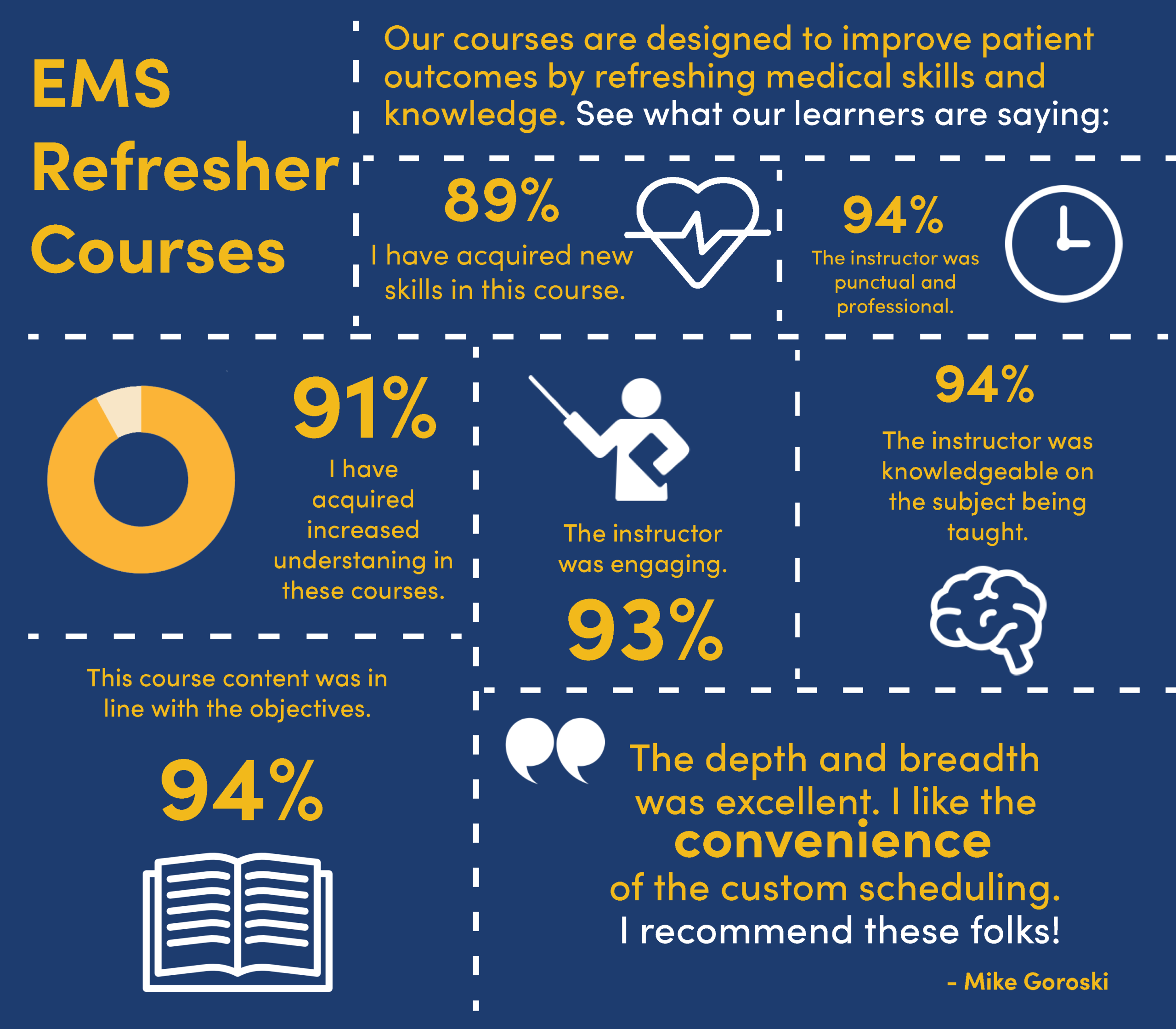CareerCert Improves Virtual Instructor-Led Training by 51%
In 2020, CareerCert instituted a new rubric to elevate our virtual instructor-led courses in 6 key areas. In that time, we’ve improved our average rating by 51.68% and have plans to continue improving through 2021.
At the start of 2020, the CareerCert team gathered to answer an important question: How can we help our customers provide the best patient care?
In response to this question, CareerCert’s team defined a strategy to raise the bar on virtual instructor-led training by ensuring our courses 1) engage learners, 2) build provider skill, 3) increase provider knowledge, 4) match national guidelines and meet course objectives, and 5) are taught by knowledgeable, professional industry experts.
The results, based on student feedback we’ve gathered throughout the year, have been encouraging and exciting.

“We decided to push ourselves to reach a new level of success,” CareerCert’s Director of Content Lisa Moore says. “Our focus is on continual improvement. In addition to these goals, we wanted to set the bar high and work on improving the educational components of each course.”
 To accomplish this, CareerCert’s Medical Advisory Board, instructors, and content development team came together to create a rubric—a standard measurement that would help in collecting data and tracking progress.
To accomplish this, CareerCert’s Medical Advisory Board, instructors, and content development team came together to create a rubric—a standard measurement that would help in collecting data and tracking progress.
“We asked ourselves, ‘What will give our students the best learning experience? How can we go above and beyond the current industry offering to create courses that improve patient outcomes?’” CareerCert’s Clinical Program Director Anne Perry shares.
The team created a rubric that assesses different course components on a scale from 1 to 5. These course components include:
- Are objectives stated and appropriately assessed so our instruction remains consistent and effective?
- Are both typical and atypical presentations used as examples to provide more comprehensive instruction?
- Do atypical and outlier presentations accompany case studies to prepare providers for situations in the field?
- Do all images instruct the learner and lead to increased understanding? Does the exam bank adequately contain 50% more exam questions than required to help accurately assess field readiness?
- Are all sources cited relevant, accurate, and up to date to ensure latest best practices are being taught?
About the new rubric, Perry shares, “We are moving beyond simply meeting compliance to focus on how we could build provider competence and confidence. It’s our responsibility to prepare first responders to provide exceptional care in any situation. To do that, we need content that will be accessible to new providers as well as engaging and informative for veteran providers.”
To track this year’s progress, Perry used the new rubric to assess and score every course from 2019 against the improvements that have been made this year. The 2019 courses received an average rating of 2.6 out of 5; the recently improved courses received a rating of 3.9 out of 5—a 51.68% increase in quality year over year.

“While we’ve made significant progress, this still marks the beginning,” Moore says. “CareerCert is committed to reviewing exam data on a quarterly basis. We will continue to review feedback, make updates, and communicate our progress. We know that when we are at our best that helps the providers we instruct be at their best, and that directly impacts patients. Because of that, we’ll never be done improving.”



